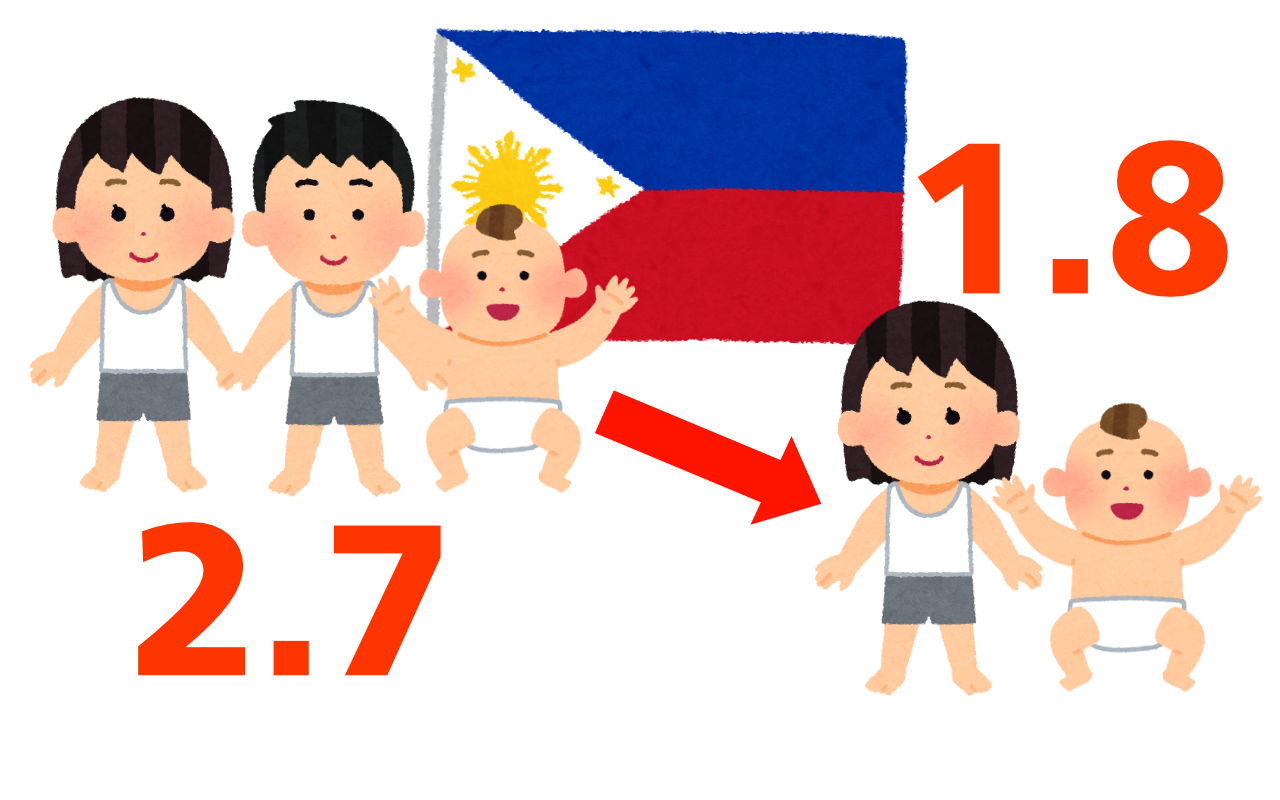
According to the May 16 Manila Newspaper, the Philippines' total fertility rate for 2021 is 1.8.
The total fertility rate is the sum of the age-specific fertility rates for women between the ages of 15 and 49, and is generally recognized as the number of children a woman will have in her lifetime.
This statistic was apparently announced by the Secretary of the National Economic and Development Authority (NEDA) of the Philippines in a speech.
It was 2.7 in 2016, which is a sharp decline since it dropped 0.9 percentage points in just five years.
In Japan, there was a significant drop from 4.32 in 1949 to 2.04 in 1957 (the year after I was born), a drop of 2.28 percentage points. This can be explained by the baby boom that occurred after the war ended and young people returned from war zones and married, and its repercussions.
Since then, it has remained at almost 2 points, but since 1975 it has declined slightly to 1.36 in 2019.
Regarding the reasons for the decline in the total fertility rate in the Philippines over the past five years, Commission on Population and Development Chairman Perez stated the following
- the penetration of family planning programs promoted by the Philippine government
- the suppression of births during the pandemic of the new coronavirus
The Filipino family used to have the image of having many children, but nowadays it is a couple and two children.
It is said that fewer children will have a positive impact on society, since more education and other resources will be spent on each child.
Since it is said that a total fertility rate of 2.07 or higher is necessary to maintain the population, the ever-growing Philippine population will eventually settle down.
We are a couple and two children, so we are an average family in the Philippines.









